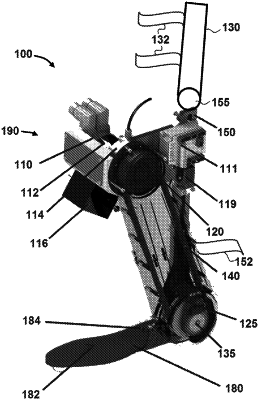| CPC A61F 5/0127 (2013.01) [A61F 5/0123 (2013.01); A61H 3/00 (2013.01); B25J 9/0006 (2013.01); B25J 9/1638 (2013.01); A61F 2005/0155 (2013.01)] | 20 Claims |

|
1. A method for controlling an orthosis device coupled to a leg of a person, the method comprising:
measuring forces exerted on the orthosis device, wherein the orthosis device comprises an actuator, a plurality of support members and a plurality of sensors, and wherein the forces include a gravitational force exerted on the person;
applying a torque to one of the plurality of support members by the actuator; and
controlling the torque applied by the actuator, wherein:
the leg to which the orthosis device is coupled of the person is modeled as a first kinematic chain when the leg to which the orthosis device is coupled of the person is in a stance phase;
the leg to which the orthosis device is coupled of the person is modeled as a second kinematic chain when the leg to which the orthosis device is coupled of the person is in a swing phase;
the gravitational force exerted on the person is estimated through models of the first and second kinematic chains;
the torque applied by the actuator is controlled to counteract the gravitational force exerted on the person estimated through models of the first and second kinematic chains;
the torque applied by the actuator is not controlled to direct the orthosis device in a pre- determined pattern of motion;
the torque applied by the actuator is controlled by a control system;
the control system shapes a closed-loop potential energy of the person;
the closed-loop potential energy of the person has modified mass parameters or modified gravity parameters;
the torque applied by the actuator is kinetically controlled via a nonlinear control method; and
the torque is calculated using a kinematic model of only the leg to which the orthosis device is coupled, wherein the kinematic model depends on the coordinates of the leg to which the orthosis device is coupled.
|